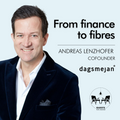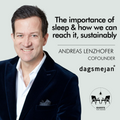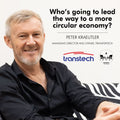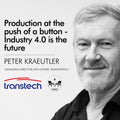Die Innovation alternativer Textilien - Teil 2
The Innovation of Alternative Textiles - Part 2
It’s 2020. Why are fashion brands still using synthetic fabrics that only cause damage to the earth, especially when there are a plethora of plant-based textiles and bio-fabricated alternatives available?
From wood-based fabrics to pineapple leather, and from bioengineered fermented yeast proteins that create a silk-like fabric to Mycelium leather, made from an underground mushroom protein, we have already dabbled into an exploration of this realm of innovative and sustainable alternative textiles.
But, it doesn’t stop there. Indeed, textile innovation is one of the most fascinating and ever-growing frontiers of the fashion industry.
Let’s delve deeper into the world of alternative fabrics.
Seaweed-Based Textiles
Made from Ascophyllum nodossum, a type of brown algae found in the Icelandic Fjords, SeaCell™ harnesses the natural properties of seaweed to create a light and breathable textile fiber. Not only is the fabric soft on skin, it also retains the nutrients naturally found in seaweed - such as iron, magnesium, calcium and Vitamin E. Your natural body moisture initiates a transfer of nutrients when your skin comes into contact with the fabric.
SeaCell™ is sustainable because when the seaweed is harvested, only once every four years, it is cut above the regenerative part of the plant which in turn encourages growth
Image from Vitadylan
Using island seaweed, beechwood, and zinc fibers,Vitadylan™is another type of nutrient-dense alternative textile that contains sea minerals. But when it comes to sustainability, Vidadylan™ is ahead of the game. The production of a product made with this textile uses up to 97% less water and 90% less Carbon Dioxide than a comparable product made with regular cotton, for example. Thanks to the zinc fibred in the textile, it also acts as a shield against harmful UV radiation, proving up to +50 SPF.
Food-Waste Based Textiles
Vietnamese designer Uyen Tran has developed a leather alternative made from waste seafood shells and coffee grounds, called Tômtex. The name originates from the word tôm, meaning shrimp. The material is created from waste coffee grounds from Tran’s home and local cafes, and chitin, which is a biopolymer found in the exoskeleton of crustaceans. It is sourced from waste seafood shells - shrimp, crab, lobster shells and fish scales. This material mixture is then dyed using various natural pigments, such as charcoal, coffee and ochre, to create a variety of colors and animal leather replicates like snakeskin and crocodile hide.
Image from Tômtex
The textile is both tough and durable, but is still pliable and soft enough to be hand-stitched or machine-sewn. It is biodegradable and makes use of the enormous waste caused by the food industry - 18 million tonnes of waste coffee grounds and 8 million tonnes of shells are discarded every year.
But wasted coffee grounds are not the only breakfast food used in textile innovations.
Image from Orange Fiber
Orange Fiber uses citrus juice by-products to create sustainable fabrics and yarns that reduce the environmental impact of the citrus juice industry. The company has developed a process in which the cellulose fibers from leftover citrus fruits are extracted to create a lightweight, soft and silky textile. The cellulose yarn can either be blended with other materials or used alone to create a 100% citrus textile. The fabric can be adjusted according to production needs and is able to be created with an opaque or shiny finish.
Image from Orange Fiber
Orange Fiber uses citrus juice by-products to create sustainable fabrics and yarns that reduce the environmental impact of the citrus juice industry. The company has developed a process in which the cellulose fibers from leftover citrus fruits are extracted to create a lightweight, soft and silky textile.
Source
The cellulose yarn can either be blended with other materials or used alone to create a 100% citrus textile. The fabric can be adjusted according to production needs and is able to be created with an opaque or shiny finish.
Image from QMILK
A company founded by microbiologist and fashion designer Anke Domaske, QMILK, uses milk not suitable for food use that is otherwise wasted to create a sustainable, organic textile that is smooth like silk. QMILK’s fibers are natural and soft with skin-friendly antibacterial properties. It is also flame retardant and has moisture-wicking and insulation properties.
Source
A company founded by microbiologist and fashion designer Anke Domaske, QMILK, uses milk not suitable for food use that is otherwise wasted to create a sustainable, organic textile that is smooth like silk.
QMILK’s fibers are natural and soft with skin-friendly antibacterial properties. It is also flame retardant and has moisture-wicking and insulation properties.
The zero-waste procedure used to create these milk fibers is both water and energy-efficient- with only two liters of water needed to create one kilogram. This is very minimal when compared to its cotton counterpart, where 20,000 liters of water are needed to produce one kilogram. This is an initiative that goes above and beyond the environmental effort to reduce the wasteful dairy industry, which discards 116m tonnes of dairy products annually. Within a few months, the textile is completely bio-degradable, further reducing its environmental impact.
Next time you take a sip of freshly squeezed orange juice or top up your morning cup of tea with milk, take a second to consider how far these unassuming items could go in building a sustainable fashion industry.








Hinterlassen Sie einen Kommentar